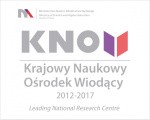On consequences of the Countable Union Theorem, their deductive strength and interaction with topology
Tom 268 / 2025
Streszczenie
In the absence of the Axiom of Choice ($\mathbf{AC}$), we investigate the relative strength of several weaker forms of the Countable Union Theorem (some of which are introduced in this paper) and we also study their mutual relationships and interdependence with certain topological propositions. In this direction, we establish positive and independence results. For some of the independence results, we introduce new Fraenkel–Mostowski models. Among other union forms considered here, the following ones are of central interest to us: (1) “The union of a denumerable family of cuc sets (i.e. infinite sets that can be expressed as a union of a denumerable family of denumerable sets) is cuc” (which is introduced in this paper) and (2) “The union of a denumerable family of cuf sets (i.e. infinite sets that can be expressed as a union of a denumerable family of finite sets) is cuf”. Among several results, we prove that
$\bullet$ (1) is implied by (2) in $\mathbf{ZF}$ (Zermelo–Fraenkel set theory without $\mathbf{AC}$);
$\bullet$ (1) does not imply (2) in $\mathbf{ZFA}$ (Zermelo–Fraenkel set theory with atoms);
$\bullet$ (1) implies that there exists an aleph with cofinality greater than $\aleph_{0}$, and thus is not provable in $\mathbf{ZF}$;
$\bullet$ (1) is implied by neither “The union of a denumerable family of denumerable sets is cuf” nor “The union of a denumerable family of cuf sets is cuc” in $\mathbf{ZF}$; the second of the above two principles is shown to be equivalent to the axiom of countable choice for finite sets;
$\bullet$ (1) is implied by the axiom of countable choice for finite sets plus “For every denumerable, disjoint family $\mathcal A$ of cuc sets, the one-point Lindelöfication of the discrete space $\bigcup \mathcal A$ is metrizable”.
Furthermore, a general criterion which ensures the validity of “The union of a denumerable family of cuc sets is cuc” in Fraenkel–Mostowski models is given.
The paper also completes some information in De la Cruz et al. [Math. Logic Quart. 54 (2008), 652–665] and in Howard and Rubin [Math. Surveys Monogr. 59, Amer. Math. Soc., 1998]. Moreover, the paper provides non-trivial answers to certain questions of Keremedis posed in a private communication.









